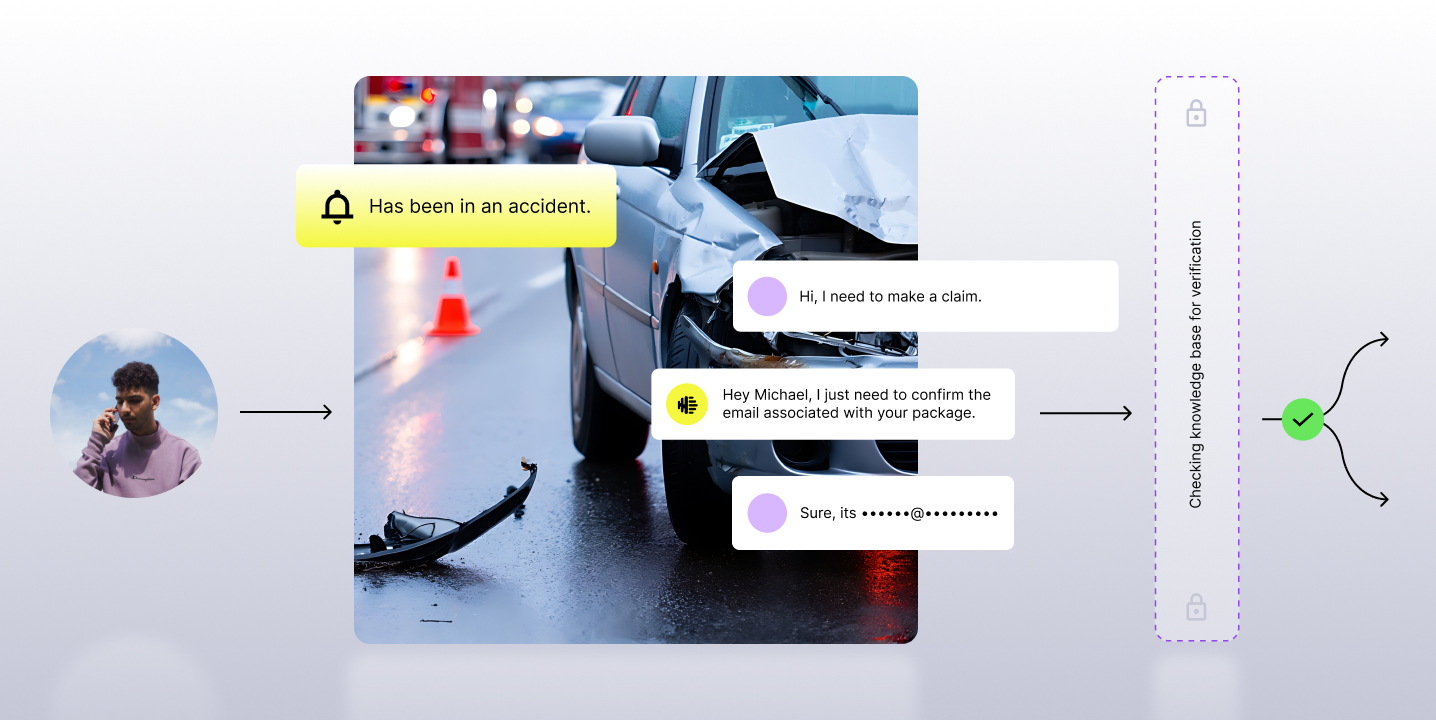When times get tough and support lines are ringing off the hook, contact center efficiency plays an important role in mitigating the impact of call surges. As we’ve seen recently, even high performing teams are vulnerable to sudden disruptions in the economy and workforce.
Unfortunately, things like outdated technology, time-consuming processes, and a lack of training or incident response plans cause some contact centers to struggle harder than others.
In this blog we’ll break down where your contact center is going wrong, what you can do to help your team improve, and how voice insights optimize the way unexpected call surges are handled.
4 Reasons Why Contact Centers Struggle with Unexpected Call Volume
1. You're Relying on Word-of-Mouth Insights From Agents
Agents are your frontline of defense. They’re the ones that are interacting directly with your customers. While it’s important to keep an eye on how agents perform on calls, relying on agents to let you know when there are problems in your contact center just isn’t efficient.
Consider this: if there’s a problem James is experiencing that Janet is experiencing too, it’ll take time to determine if it’s an isolated issue or if it’s something all agents are experiencing on the floor. Those minutes spent troubleshooting could be spent activating a protocol, updating IVR options, or referring agents to your call surge FAQ document. Now that contact center agents are moving to remote work, these slow, manual forms of troubleshooting will simply not cut it.

Being reactive in a time-sensitive situation is also costly. Using an example, one auto insurer we work with saw a 14% increase in call volume when an app malfunctioned. Suddenly, their contact center was thrown into crisis mode with little warning and customers experienced hour-long hold times. To prevent this from happening again, the insurer revamped their Quality Program and optimized their contact center so that they could be proactive rather than reactive.
To do so, first the team began monitoring 100% of their support calls (up from just .003%). They then used AI to search conversations for meaningful insights on call drivers and frequently asked questions that drove up phone times. From there, the auto insurer pulled insights to inform the hold time message and drive people through less costly channels, such as email and chat, while also coaching agents on new phone approaches.
2. Your Coaching and Training is Inefficient
With a 40% average churn rate among contact center agents, training teams often focus first on getting agents on the floor quickly. But efficiency is a double edged sword. If agents start answering calls before they have a strong enough knowledge base, you’re putting call quality at risk. In the event of an unexpected call surge, this “trial by fire” approach can significantly slow responses and jam up lines.
That’s why contact centers need to focus less on tactical knowledge and more on core skills, including developing a strong foundation around compliance, process adherence, and communication.
.png)
In addition to building core skills in your agents, contact centers need to find ways to help agents self-coach, including:
- Leveraging your Internal Knowledge Base (IKB) with up-to-date, important self-service resources.
- Automating agent evaluations across 100% of calls so agents can see their top/bottom areas of opportunity and how they compare to peers.
- Rethinking your approach to coaching, moving away from “checking boxes” and toward understanding how an agent displayed behaviors like active listening, empathy, and patience.
3. You’re Not Getting Insights from Calls
When contact centers analyze 100% of calls, supervisors and training teams ensure that performance evaluations are less subjective, ultimately establishing more trust.
But on average, contact centers review less than 1% of calls for quality and compliance purposes. This means that most contact centers are leaving hundreds, if not thousands, of call recordings untouched. That’s where technologies such as contact center AI can help. Through the use of speech analytics, contact center AI insights can be used to identify trends to improve compliance, coaching, and quality management across 100% of calls.
With a global transition to remote work currently underway, finding a better way to gather insights from calls has never been more important. For many contact centers, that starts with enabling keyword search within conversations and using voice insights to do things like set performance benchmarks and standards.

Examples of insights you can gather from calls include:
- Call Drivers: What are some common keywords that signal spikes? Are there systems in place to leverage these early indicators of an emerging issue?
- Dead Air: If agents aren’t doing well on this one across the board, that’s an indication that agents don’t know what to say. Have your recently onboarded new agents? If so, it may mean that you need to go back to basics and do a more thorough run-through of FAQs, and how to respond to them.
- Supervisor Escalations: Where are agents experiencing them? At what point on the call? How often? Frequent escalations could mean an agent is lacking in communication skills, and needs targeted coaching in that area.
- First Call Resolution: Pinpointing which agents do well on FCR, and which need improvement can inform a peer-to-peer coaching program.
- Comprehensive agent performance: Are your scorecards accurately evaluating agents for performance across all their calls?
4. You Don't Have Proactive Tools and Processes
We talked about the importance of insights. But the way you gather these insights matters, too. If you’re only pulling insights from subjective evaluations and checklists, odds are you’re missing out on ways to improve efficiencies at scale.
For instance, if you:
- Juggle multiple tools and spreadsheets to listen to, evaluate and coach on a single call, you aren’t building a scalable system.
- Lack an integrated way to gather feedback from agents, you are much more susceptible to breakdowns when call volume skyrockets.
- Don’t have a way of retroactively reviewing all calls to find trends and learnings, you’ll miss opportunities for improvement.
Do any of these sound familiar? Challenges like these are why 66% of call center businesses are looking to invest in advanced analytics, such as contact center AI, to improve the customer journey.
Contact center AI can solve these problems, and more. With contact center AI, you’re able to get insights from 100% of calls for compliance, process adherence, and to improve agent performance.
How to Deal with Call Surges Like a Pro
Curious to learn more about call surge drivers and how to protect CSAT during spikes in call volume? Check out our playbook to hear from contact centers that are leveraging voice insights and develop your own proactive approach to manage call surges with our step-by-step guide.

About the Author
Gabi Contreras handles social and partner marketing at Observe.AI. You can learn more about Gabi here.

.png)














